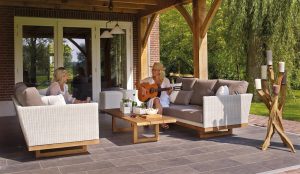London’s luxury living has been a captivating tale of transformation. From the grandeur of historic palaces to the sleek sophistication of contemporary skyscrapers, the city’s high-end residences mirror its ever-evolving skyline and society. A journey through London’s luxury homes is a voyage through time, revealing a fascinating narrative of architectural innovation, changing lifestyles, and the city’s enduring allure.
The Era of Historic Mansions
Grand historic mansions were once the epitome of luxury living in London. These opulent homes, which were frequently located in prestigious areas such as Mayfair, Kensington, and Belgravia, had complex architectural elements, spacious gardens, and lavish interiors.
These residences were emblems of wealth and status, with expansive living areas, multiple rooms for entertaining, and staff quarters. Properties like these were frequently depicted in historical novels and period dramas, evoking the grandeur that marked an age.
Notable examples include stately homes created by prominent architects such as John Nash and Sir Christopher Wren; these homes were not simply residences, but also cultural landmarks.
The Transition to Modern High-Rise Apartments
As London expanded and space became a valuable commodity, the city’s approach to luxurious living shifted. The demand for more practical and contemporary living areas prompted the construction of modern high-rise flats, especially those branded by luxury fashion and lifestyle groups. New developments in London prioritise sustainability, convenience, cutting-edge amenities, and stunning views of the city skyline.
Contemporary luxury properties are defined by their sleek architecture and advanced amenities. Rooftop gardens, concierge services, and proximity to London’s vibrant cultural and commercial hubs are common features. The city’s diverse luxury market, ranging from elegant townhouses to soaring apartments, reflects this evolution.
Many old buildings have also been modernised to meet current luxury standards while keeping their historical appeal. This blend of old and new is especially obvious in certain neighbourhoods of London, where traditional townhouse properties have been restored and listed with modern interiors while retaining their original character. This style appeals to those who value the grandeur of old structures while preferring the convenience of modern living.
Case Studies for Modern Luxury Developments
- Versace Residences: Located in Nine Elms, DAMAC Tower features exceptional apartments designed by Versace Home. This development boasts lavish furnishings, a gorgeous rooftop garden, a swimming pool, and a cutting-edge gym, showcasing a fusion of high fashion and contemporary lifestyle.
- One Hyde Park, located in Knightsbridge, sets the standard for luxury living. The apartments are incredibly spacious and created by world-renowned architects – not to mention being serviced by the Mandarin Oriental. Amenities include a private cinema, spa, and 24-hour concierge service.
- Battersea Power Station: This construction blends historic architecture with modern luxury. The famous power plant has been rebuilt into a residential and commercial hub, providing luxurious flats with unique industrial designs and access to new parks, shops, and restaurants.
The Future Of Luxury Living
London’s luxury living has undergone a remarkable transformation, evolving from stately townhouses to sleek, sky-high apartments. Today’s luxury residences are a harmonious blend of tradition and modernity, offering residents the pinnacle of opulent living. But the future is being shaped by sustainability and technology. Eco-friendly construction and smart home features are becoming essential elements, elevating the living experience and meeting growing demand.
The luxury market is expanding to include diverse offerings, from cutting-edge penthouses to eco-conscious homes with green roofs and energy-efficient systems. As these trends evolve, London’s luxury scene will become increasingly sophisticated and sustainable.




